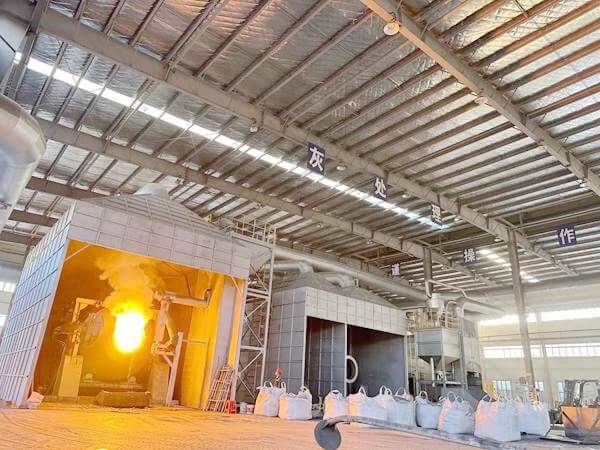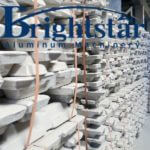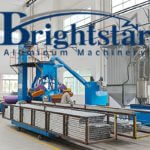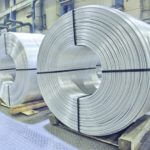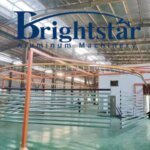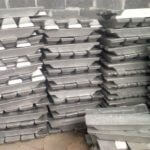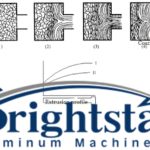How to minimize aluminum dross generation in the melting
How to minimize aluminum dross generation in the melting
Minimizing aluminum dross generation during aluminum melting is crucial for maximizing metal yield and reducing waste.
Here are some key strategies to implement:
Pre-processing:
Clean scrap: Use clean and dry scrap aluminum to minimize oxidation and dross formation. Remove contaminants like paint, oil, and grease before melting.
Proper charging: Charge the scrap carefully to avoid splashing molten metal and oxidation. Use chutes or conveyors to submerge scrap quickly.
Preheating: Preheating scrap can reduce the temperature difference between scrap and molten metal, leading to less oxidation and dross.
Melting process:
Controlled temperature
Maintain a controlled melting temperature as high as possible without exceeding the burning point of aluminum.
Overheating accelerates oxidation and dross formation.
Stirring and fluxing
Regularly stir the molten bath to promote complete melting and even heat distribution.
Use appropriate fluxing agents to facilitate slag formation and separation from the aluminum.
Furnace maintenance
Properly maintain the furnace and equipment to ensure optimal performance and prevent temperature fluctuations that can contribute to dross formation.
Additional techniques:
Inert atmosphere
In some cases, using an inert atmosphere like nitrogen or argon in the furnace can significantly reduce oxidation and dross generation.
Salt slag processes
Specialized processes like the Rotary Furnace or the Aluminum Salt Bath (ASB) can significantly reduce dross formation while recovering valuable aluminum.
Optimize furnace design
Certain furnace designs can promote better thermal efficiency and control, minimizing dross generation.
Remember:
Minimizing dross generation is a continuous process, requiring ongoing monitoring and adjustments.
Train your personnel on proper charging, stirring, and maintenance procedures.
Invest in appropriate equipment and technology to optimize your melting process.
Evaluate the cost-effectiveness of different techniques and upgrades for your specific operation.
By implementing these strategies and adapting them to your individual needs, you can significantly reduce aluminum dross generation and maximize the efficiency and profitability of your melting process.
What is aluminum dross and generation causes?
Aluminum dross is a byproduct formed during the melting and processing of aluminum.
It’s a complex mixture of solid components, largely comprising aluminum oxides, metallic aluminum particles, and other impurities like salts, nitrides, and carbides.
Here’s a breakdown of the main causes of aluminum dross generation:
Oxidation:
When molten aluminum comes into contact with air, it readily reacts with oxygen, forming aluminum oxide (Al₂O₃).
This oxide forms a dross layer on the surface of the melt.
Factors that promote oxidation include:
High melting temperature: Increased temperature exposes molten aluminum to air for a longer duration, boosting oxidation.
Turbulent mixing: Agitation and splashing during melting can increase surface area exposed to air, leading to more dross formation.
Moisture and contaminants: The presence of moisture in scrap or furnace atmosphere, along with oil, paint, and other contaminants on scrap, can accelerate oxidation and dross formation.
Incomplete melting:
If scrap aluminum isn’t fully melted during the process, residual metallic aluminum can get trapped within the dross, impacting recovery and increasing waste.
Factors contributing to incomplete melting include:
Improper charging: Uneven or slow charging of scrap can cause uneven heating and incomplete melting.
Incorrect temperature control: Insufficient temperature may not melt all the scrap, leaving behind aluminum particles in the dross.
Furnace inefficiencies: Issues with furnace design, burner performance, or insulation can lead to uneven heat distribution and incomplete melting.
Chemical reactions:
Some impurities in scrap, like magnesium or zinc, can react with aluminum and form intermetallic compounds that contribute to dross formation.
Fluxing agents used to remove impurities can also react with the molten bath and generate additional dross, although their overall role is to minimize dross formation due to other contaminants.
Understanding these causes is crucial for minimizing aluminum dross generation and improving the efficiency of your melting and processing operations.
By implementing control measures like controlling temperature, minimizing air exposure, optimizing mixing, and using appropriate fluxing agents, you can significantly reduce dross formation and reclaim valuable aluminum for further use.
How to improve aluminum recovery rate in aluminum dross processing
There are numerous ways to improve the aluminum recovery rate in aluminum dross processing, and the best approach often involves a combination of techniques.
Here are some key strategies to consider:
Pre-processing:
Sorting and segregation: Separating different types of dross (primary, secondary, mixed) allows for tailored processing methods and improves overall recovery.
Crushing and sizing: Breaking down dross into smaller pieces optimizes metal extraction by increasing surface area and accessibility.
Magnetic separation: Removing iron and other ferrous contaminants reduces metal oxidation and facilitates cleaner aluminum recovery.
Processing methods:
Mechanical separation: Techniques like mechanical stirring(aluminum dross recovery machine), drum separation, shaking tables, and air separation can effectively separate metal from lighter aluminum oxides and slag.
Melting and refining: Traditional furnaces with fluxing agents can melt dross and separate molten aluminum from impurities.
Salt slag processes: Specialized processes like the Rotary Salt Furnace (RSF) or the Aluminum Salt Bath (ASB) use molten salt baths to efficiently separate aluminum from oxide.
Hydrometallurgical methods: Chemical leaching processes can dissolve aluminum oxides and recover aluminum through precipitation or electrolysis.
Optimizing process parameters:
Temperature control: Controlling furnace and bath temperatures during melting and refining significantly impacts metal yield and slag formation.
Flux selection and usage: Choosing the right fluxing agent for your dross type and process enhances separation efficiency and reduces aluminum loss.
Chemical control: Adjusting pH and chemical reactions in hydrometallurgical processes can maximize aluminum extraction and purity.
Additional techniques:
Briquetting and remelting: Compressing dross into briquettes can improve handling and remelting efficiency.
Waste minimization: Optimizing processes to minimize the generation of dross in the first place can also contribute to improved overall recovery.
Factors to consider when choosing techniques:
Dross type and composition: Different techniques are better suited for specific types of dross and their aluminum content.
Processing capacity and scale: Choose methods that can handle your dross volume and align with your production goals.
Cost and operational efficiency: Evaluate the cost-effectiveness of different techniques for your particular situation.
Environmental impact: Consider the environmental footprint of each method and choose sustainable options for waste disposal and recycling.
By implementing a combination of these strategies and tailoring them to your specific needs, you can significantly improve the aluminum recovery rate in your dross processing operation.
Consulting with experienced industry professionals and researching the latest technologies can further optimize your approach and maximize resource recovery.

